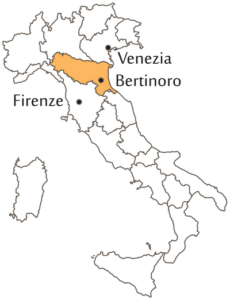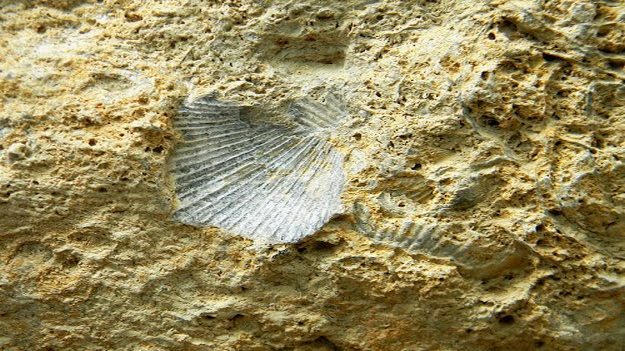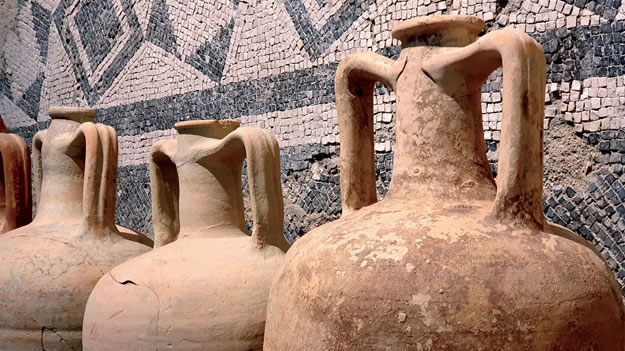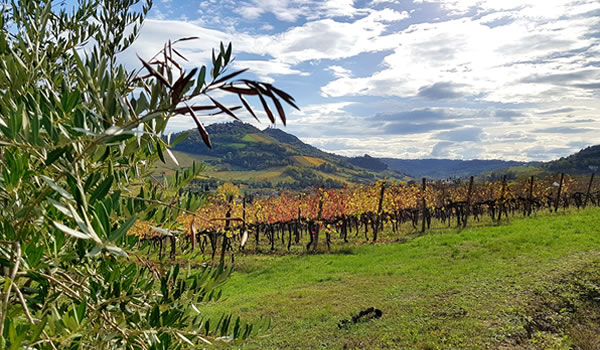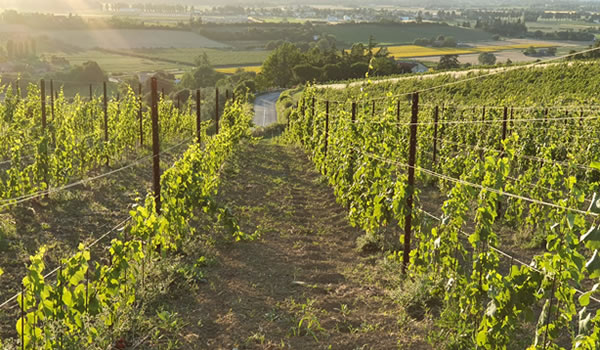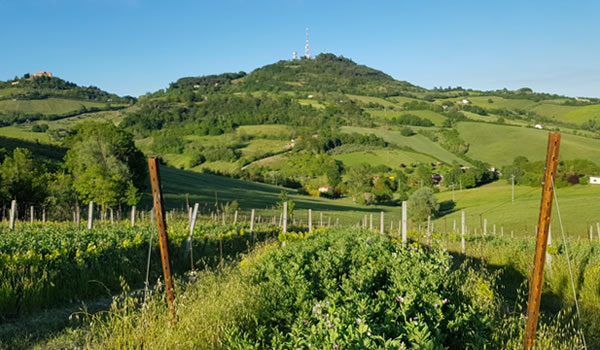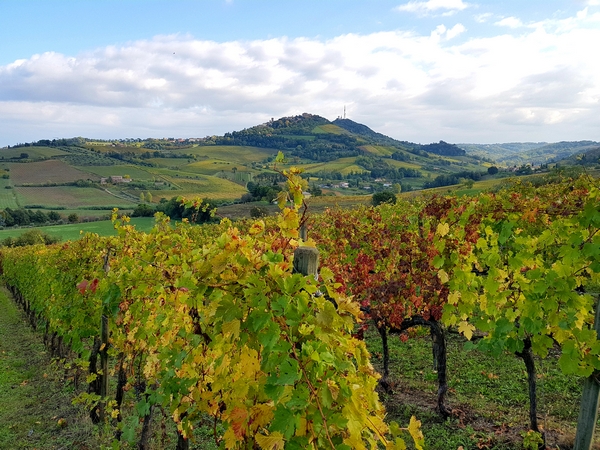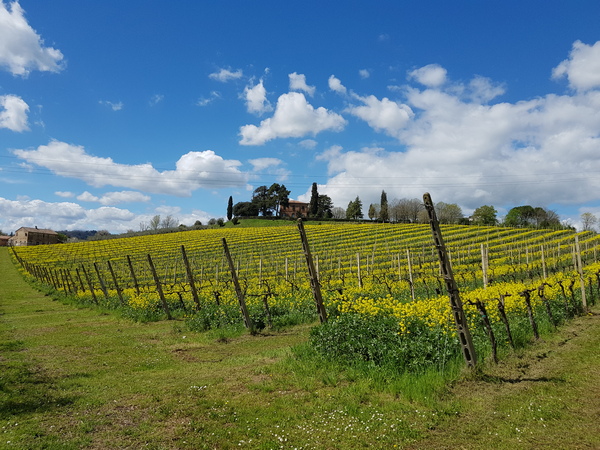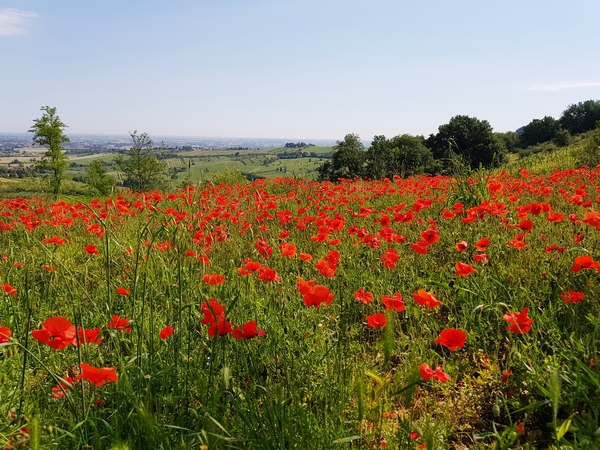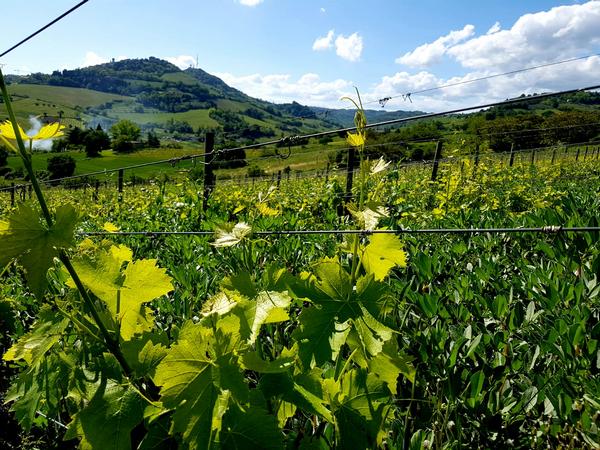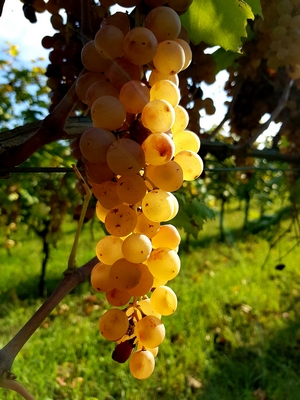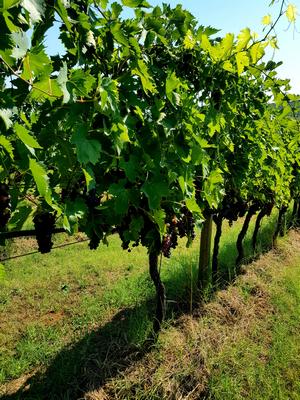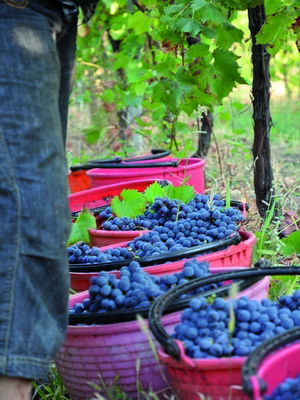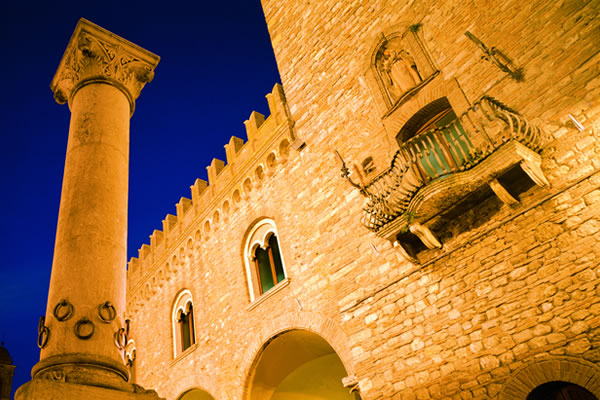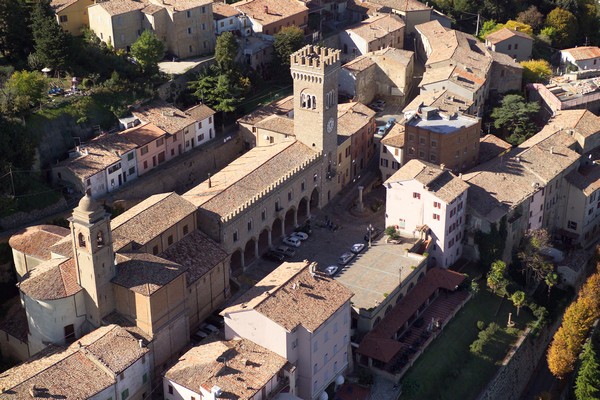TERRITORY
BERTINORO AND ROMAGNA.
In the North if Italy, there is a famous Roman road built 2000 years ago by Marco Emilio Lepido: it is known as the Via Emilia.
The Via Emilia splits the territory of the Emilia-Romagna region in two: in Romagna, the Apennines slowly rise on one side, while on the other lies a strip of plain that narrows as you travel south to Rimini and meet the Adriatic Sea, the sea that nurtured the incredible power of Venice and saw the city flourish.
Bertinoro towers majestically in a front-line setting, a precursor of the Apennines that looks out over the blue Adriatic Sea and is cooled by its winds.
BERTINORO, LIKE NOTHING ELSE IN ROMAGNA.
Bertinoro has been the meeting point between the Adriatic and the Apennines, that is, between land and sea since ancient times. The intermingling starts with the sea breezes that arrive here and mitigate the climate, ensuring fresher summers and warmer winters.
The soil also bears witness to this mix with the legacy of the ‘Spungone’, the calcareous rock of organic origin that formed in the shallow waters as Romagna emerged from the sea. This rock, combined with the presence of active limestone, gives the area’s wines their unique characteristics: dense and ripe tannins, a sapid note and a rich fruit expression.
CELLI’S VINEYARDS, A COLLECTION OF DIFFERING CHARACTERS.
The Celli company cultivates 35 hectares of vine: after the conversion time, from August 1st , 2020 all grapes are certified organic.
Celli’s vineyards surround the town of Bertinoro and the diversity of soils and microclimates defines four different characters, a collection useful for fine-tuning highly balanced and strongly territorial wines.
“LA MASSA”, AT MASSA DI BERTINORO
Massa’s vineyards look towards the Savio river valley and the soils here are rich in silt, with moderate clays and sand. Powerful carbonates and limestone. Body and structure.
“MAESTRINA”, AT CASTICCIANO DI BERTINORO
Light soils that mix silt, clay and sands, boast an abundant presence of active limestone and ‘Spungone’. North-east exposure, fresh breeze constantly blowing in from the sea. Extreme elegance and balance.
“CELLAIMO”, AT CELLAIMO DI BERTINORO
Soils are a mix of silt, clay and sand and hide ‘Spungone’ (the local calcareous soil) at depth.
Salinity and minerality
“CAMPI DI FRATTA”, AT FRATTA TERME
Clear clays, silt, abundant limestone and presence of chalk. The Adriatic winds here meet the air coming from Monte Maggio, creating a unique microclimate that slows down ripening. Freshness and minerality.
BERTINORO, NOT ONLY WINE.
Bertinoro is known as the ‘Balcony of Romagna’ for its splendid view on the sea and the hills; it is also a historic village which has kept its ancient structure, with cobbled alleys and foreshortened views of the past. The heart of Bertinoro is the large and elegant Piazza della Libertà (Square of Liberty) which on one side opens out to the plain of Romagna and on the other one lines up the Cathedral, the Town Hall, the Tower and the Column of the Rings.
Underneath the square there is the Museum–Wine Shop Ca’ de Be’, where the Bell of the Albana is to be found: this bronze bell, showing high relieves representing the grape harvest, was cast in 1987 when the wine Albana di Romagna was awarded the D.O.C.G.
The age-old fortress dominates the hill: after a careful restoration, it now houses the University Centre of the Alma Mater Studiorum of Bologna and is the seat of the Inter-religious Museum.
Since 2011 Bertinoro is also seat of the ‘Historic Reserve’ of Sangiovese Di Romagna, a precious deposit where the best vintages of the Sangiovese wines from Romagna are stored.
Bertinoro is also wellness; in fact, immersed in the green of thirteen acres of park and completely renovated in 2008, rises the SPA of Fratta Terme, with its great variety of sources.
Bertinoro and Romagna are the cradle of many renowned food products: the ‘pit cheese’ (formaggio di fossa), with unique aroma characteristics; the ‘squacquerone’, a soft paste cheese; the ‘piadina’, sort of local bread; the bread of Romagna; the ‘savor’, a sort of jam made of grape must and fruit in season: nuts, pears, dried fruit, figs, candied fruit and so on; the extra virgin olive oil.
All of this, together with top quality wine production, puts Bertinoro at the centre of food and wine tourism.
More info: visitbertinoro.com


